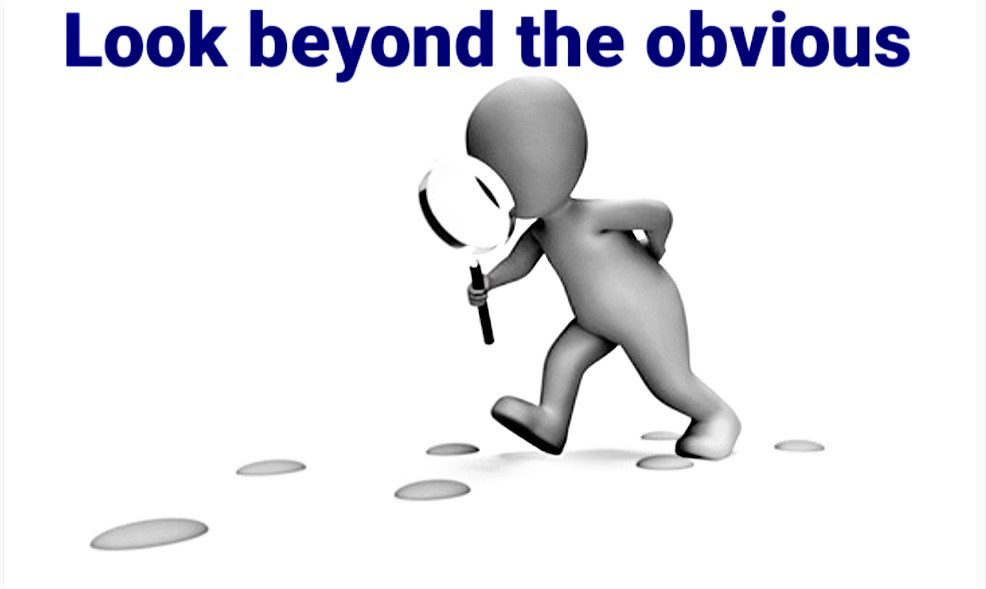When I was in my early to mid-twenties, and a struggling psychology intern, my clinical mentor asked me a series of questions, with the objective of removing any unwanted medical rubble I had assembled during my graduate school years. His professional intention? To modify my thinking and gently guide me into a world of hopeful humanistic healing. His name was Anthony Crane, PhD.
Dr. Crane’s administrative and clinical/supervisory approach to newly appointed clinicians was anything but mainstream. To be drawn into his clever interpretation of perplexing emotional conditions required breaking free from irrefutable teaching/learning styles. In many ways, it dictated that I consider taking a blind professional leap of faith. Here is an example of what I am talking about.
On one occasion I remember casually walking into a clinical observation room following one of my first clinical encounters. Dr. Crane was rewinding the tape of my session and without looking up he asked me this simple question, “Who do you think walked into that room with you today?” I fumbled with the patient chart, looking for a name. Perplexed, he looked at me, shook his head, and replied, “You have no idea why I asked you that question, do you?”
Dr. Crane was not looking for a name, nor was he looking for my clinical interpretations or suggested treatment options. He wanted me to look beyond the obvious and outside my “clinical and academic theories.”
To an outsider, that moment might appear simple and uncomplicated. For me it revealed a launching point for what was to follow. Unbeknownst to me, I was encountering what my Buddhist friends would later describe as “a moment when I need to place more wood on the fire.” Those are the times when I am asked to break free from conventional understandings and seek alternative points of view.
For the next hour, Dr. Crane surrounded my supervision with an interpretation of theoretical observations that would preoccupy my thinking for the remainder of my clinical career. From those moments forward, my challenge was to uncover the planned, accidental, and complex forms of patient camouflage. I would no longer be solely probed for an analytical behavioral opinion. I would need to balance what I could see and not see. From Dr. Crane’s point of view, the personal chaos created by the modest act of attending an initial interview appointment had kick-started an internal emotional state for me. I was merely being questioned as to which rendition of the person I had encountered.
In recalling this story, the hidden moments that stitch together the impact of chaotic life activity explain the emotional healing paths, which have been falsely paved. In effect, they teach us how to neutralize personal negative conditions – especially those we are all struggling to outlast.
Tony Crane taught me that there are unsettling times when our lives are analogous to a small pocket mirror crashing to the floor. At that moment, our energy becomes detached and separated into multiple splintered pieces. When examined, these moments reveal a pattern of off-putting energy. Becoming intently aware of the chaotic effects of those energies gives us the chance to link our mirror back together.
Inadvertently, Dr. Crane constructed a platform of understanding as to how an individual’s personal frenzied state starts by examining the simplest of acts. In effect, comprehending chaotic emotional states, natural or otherwise, require sincere deep dives into our own personal assessments of life.


 Bud Megargee is a former senior behavioral healthcare executive; a Washington, DC., healthcare lobbyist; and an independently published, best-selling and award-winning author. He began writing after exploring Eastern philosophy and alternative medicine techniques in the professional treatment of emotional challenges at a Taiwanese Buddhist monastery.
Bud Megargee is a former senior behavioral healthcare executive; a Washington, DC., healthcare lobbyist; and an independently published, best-selling and award-winning author. He began writing after exploring Eastern philosophy and alternative medicine techniques in the professional treatment of emotional challenges at a Taiwanese Buddhist monastery.